The Video Game Project
A Closer Look At The Prototypes That Became Your Favourite Games!
WII PROTOTYPE & DEBUG HARDWARE
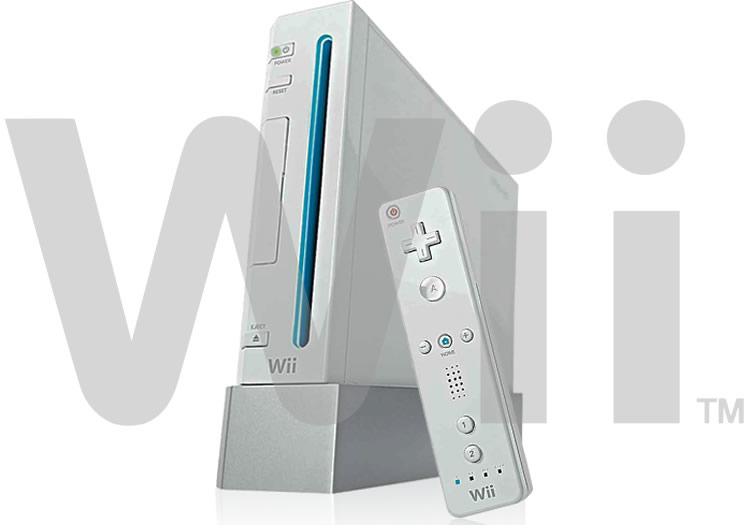 The successor to the Gamecube, the Wii, is a home video game console developed by Nintendo. The Wii was conceived in 2001, as the Nintendo GameCube was first released. According to an interview with Nintendo game designer Shigeru Miyamoto, the concept involved focusing on a new form of player interaction. "The consensus was that power isn't everything for a console. Too many powerful consoles can't coexist. It's like having only ferocious dinosaurs. They might fight and hasten their own extinction."
The successor to the Gamecube, the Wii, is a home video game console developed by Nintendo. The Wii was conceived in 2001, as the Nintendo GameCube was first released. According to an interview with Nintendo game designer Shigeru Miyamoto, the concept involved focusing on a new form of player interaction. "The consensus was that power isn't everything for a console. Too many powerful consoles can't coexist. It's like having only ferocious dinosaurs. They might fight and hasten their own extinction."
In 2003, game engineers and designers were brought together to develop the concept further. By 2005 the controller interface had taken form, but a public showing at that year's Electronic Entertainment Expo (E3) was canceled. Miyamoto stated that the company "had some troubleshooting to do. So we decided not to reveal the controller and instead we displayed just the console." Nintendo president Satoru Iwata later unveiled and demonstrated the Wii Remote at the September Tokyo Game Show.
The Nintendo DS is said to have influenced the Wii's design. Designer Ken'ichiro Ashida noted, "We had the DS on our minds as we worked on the Wii. We thought about copying the DS's touch-panel interface and even came up with a prototype." The idea was eventually rejected because of the notion that the two gaming systems would be identical. Miyamoto also stated that "if the DS had flopped, we might have taken the Wii back to the drawing board." In June 2011 Nintendo unveiled the prototype of its successor to the Wii, to be known as the Wii U.
The (Wii) console was known by the code name "Revolution" from May 11th, 2004 when its codename was announced at Nintendo's 2004 pre-Electronics Entertainment Expo press conference in Los Angeles, California until April 27th, 2006, immediately before E3. Before the Wii's codename was announced, the media referred to the console as "GCNext" or Gamecube Next and "N5" or Nintendo's fifth major home console. Nintendo's spelling of "Wii" (with two lower-case "i" characters) is intended to resemble two people standing side-by-side (representing players gathering together) and to represent the Wii Remote and Nunchuk. One reason the company has given for this name choice since the announcement is: "Wii sounds like 'we', which emphasizes that the console is for everyone. Wii can easily be remembered by people around the world, no matter what language they speak. No confusion."
Some video game developers and members of the press stated that they preferred "Revolution" over "Wii". Forbes expressed a fear "that the name would convey a continued sense of 'kidiness' to the console." The BBC reported the day after the name was announced that "a long list of puerile jokes, based on the name," had appeared on the Internet. Nintendo of America's Vice President of Corporate Affairs Perrin Kaplan defended the choice of "Wii" over "Revolution" and responded to critics of the name, stating "Live with it, sleep with it, eat with it, move along with it and hopefully they'll arrive at the same place." Nintendo of America's president Reggie Fils-Aime acknowledged the initial reaction and further explained the change: "Revolution as a name is not ideal; it's long, and in some cultures, it's hard to pronounce. So we wanted something that was short, to the point, easy to pronounce, and distinctive. That's how 'Wii,' as a console name, was created."
On September 14th, 2006 Nintendo announced release information for Japan, North and South America, Oceania, Asia and Europe including dates, prices, and projected unit-distribution figures. It was announced that the majority of the 2006 shipments would be allotted to the Americas, and 33 titles would be available at its launch. The Wii was launched in the United States on November 19th, 2006 for $249.99, and was later launched in the United Kingdom on December 8th, 2006 for £179. The United Kingdom and Europe experienced a widespread shortage of Wii units in many High-Street and online stores, and was unable to fulfill all pre-orders at its release. The Wii was launched in South Korea on April 26th, 2008, Taiwan on July 12th, 2008, and Hong Kong on December 12th, 2009.
As a seventh-generation console, the Wii competed with Microsoft's Xbox 360 and Sony's PlayStation 3. Nintendo stated that its console targeted a broader demographic than that of the two others. As of the first quarter of 2016, the Wii led its generation over the PlayStation 3 and Xbox 360 in worldwide sales, with more than 101 million units sold; in December 2009, the console broke the sales record for a single month in the United States.
The Wii introduced the Wii Remote controller, which can be used as a handheld pointing device and which detects movement in three dimensions. The console runs games supplied on Wii optical discs. It also supported the now discontinued WiiConnect24 service, which enabled Wii to receive messages and updates over the Internet while in standby mode. Like other seventh-generation consoles it supported a service, called "Virtual Console", that downloaded emulated games from past Nintendo consoles, support for online video streaming such as BBC iPlayer, and other services provided by Nintendo over the Internet. From June 28th, 2013, Internet services were gradually discontinued; since January 31th, 2019, only re-download of games, system software update, and transfer of data between Wii and Wii U continued to be available, to be withdrawn at an unspecified future date. Wii Points could no longer be purchased after March 2018, and could not be used and were permanently lost from January 31th, 2019.
The Wii succeeded the GameCube; early models are fully backward-compatible with all GameCube games and most accessories. Nintendo first spoke of the console at the E3 2004 press conference and later unveiled it at E3 2005. Nintendo CEO Satoru Iwata revealed a prototype of the controller at the September 2005 Tokyo Game Show. At E3 2006, the console won the first of several awards. By December 8th, 2006, it had completed its launch in the four key markets.
Later models are no longer compatible with Nintendo GameCube. Nintendo released a revised unit in 2011 in Europe, Australia, and North America. The Wii Mini, Nintendo's first major console redesign since the New-Style Super NES, was released first in Canada on December 7th, 2012. The Wii Mini can only play Wii optical discs, as it has neither GameCube compatibility nor any networking capabilities; this model was not released in Japan, Australia, or New Zealand. The Wii's successor, the Wii U, was released on November 18th, 2012. On October 20th, 2013, Nintendo confirmed it had discontinued production of the Wii in Japan and Europe.
Below are examples of Wii prototype and debug hardware.
Prototype Wii Controllers
Unlike their released counterparts, these prototype controllers are grey and not the classic Nintendo Wii white.
The prototype Wiimote has three buttons labelled select, home and start instead of the - , home and + buttons we are used to. The 1 and 2 buttons are labelled B and A respectively, giving us two A buttons. It's built in speaker is missing and the Wii logo is absent in favour of a Nintendo one. The differences don't end there howerever and by flipping the wiimote over we can see that the top of the remote also looks different to the one we know and love, as does the bottom. A GameCube style controller input was used to connect it to it's development console counterpart as the original plans for the console did not inlcude wireless technology.
Similiar to the Wiimote, the prototype nunchuck also has it's differences. An RJ45 cable connects it to the Wiimote and the buttons underneath are missing their labels.
Finally the Wii sensor bar interacts with the prototype console via a Gamecube memory card style connector instead of the smaller connector we are used to. The cable length is also shorter.
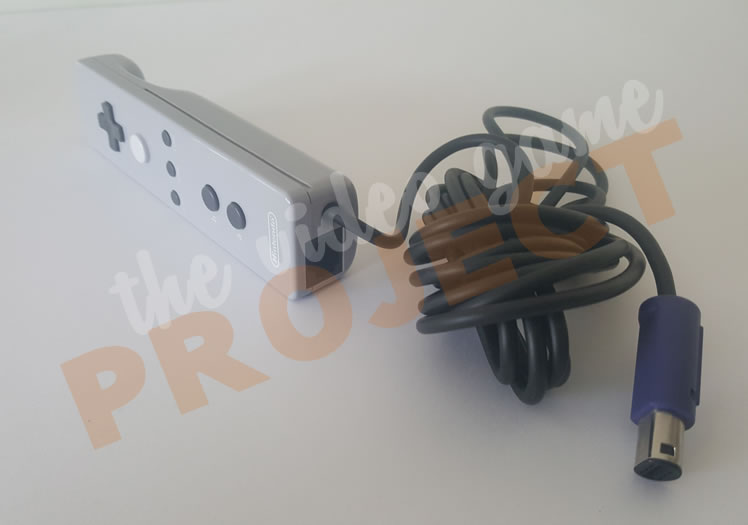
Wiimote
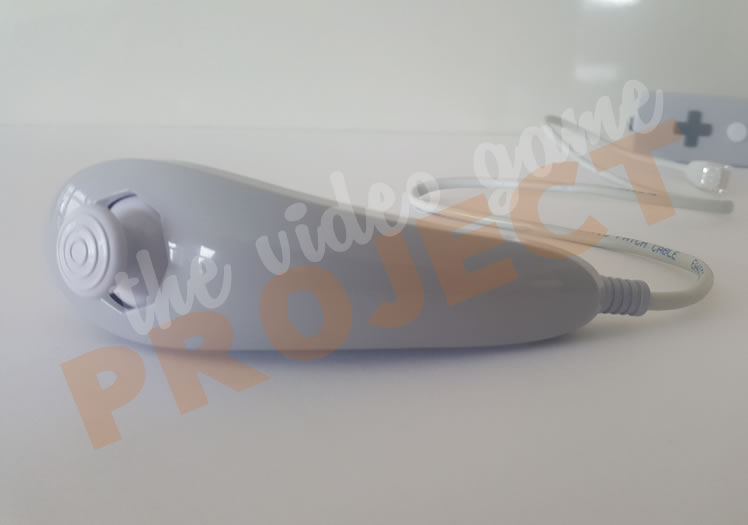
Nunchuck
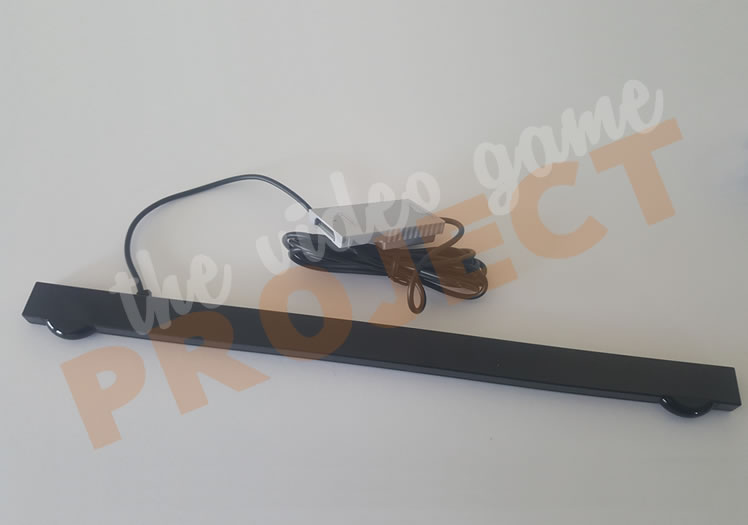
Sensor Bar
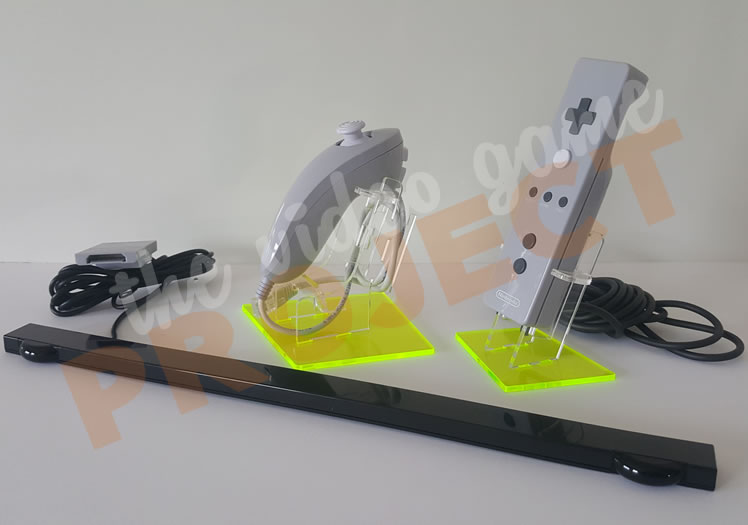
All Front
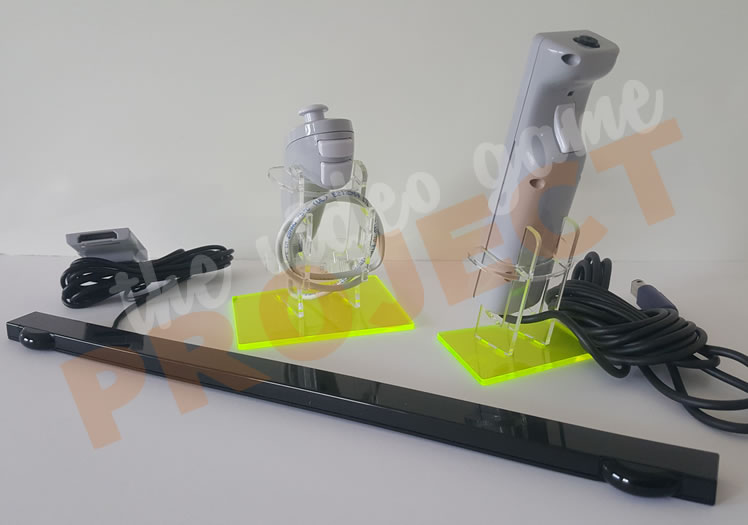
All Back
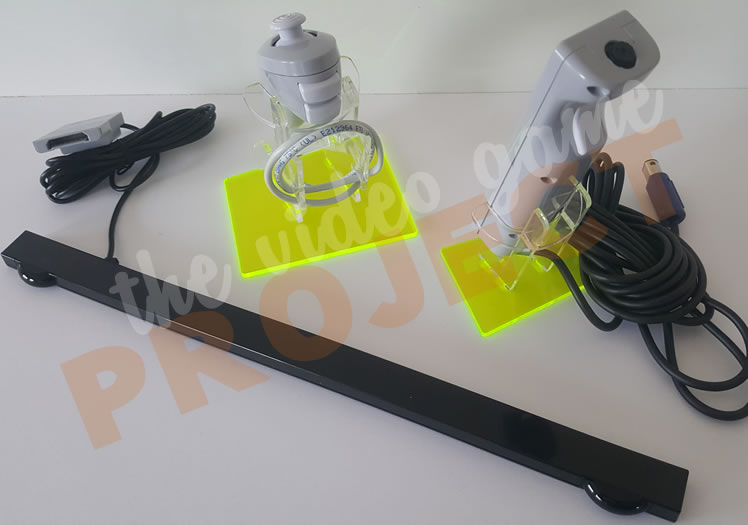
All Above
RVT-R Reader
The RVT-R Reader was a debug unit used to play beta versions of games for test purposes. It was also loaned to game reviewers to review pre-release games, though usually on a temporary basis. The media was RVT-R dvd discs (single layer) that only play in the RVT-R units.
Wired
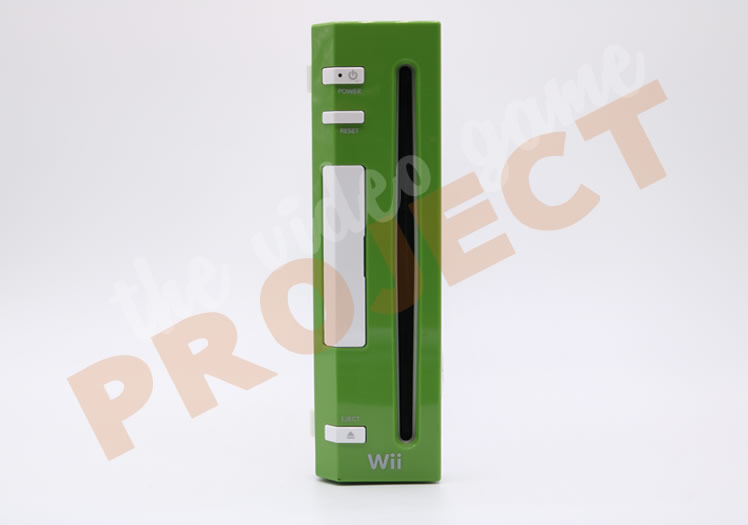
Front
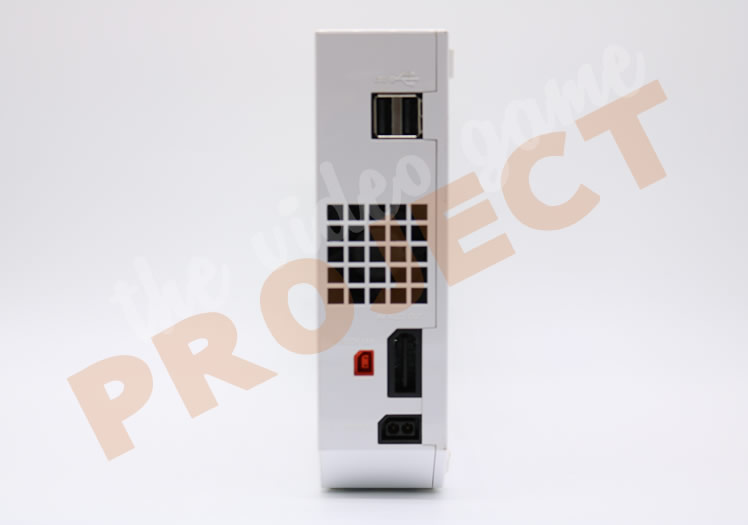
Back
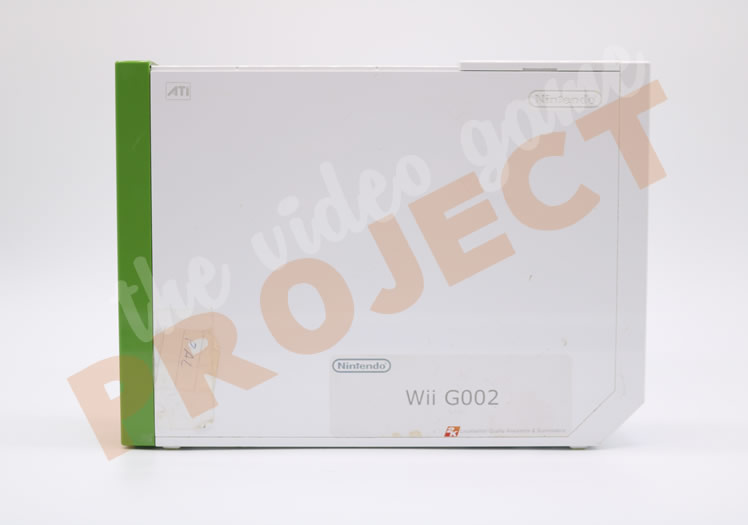
Side 01
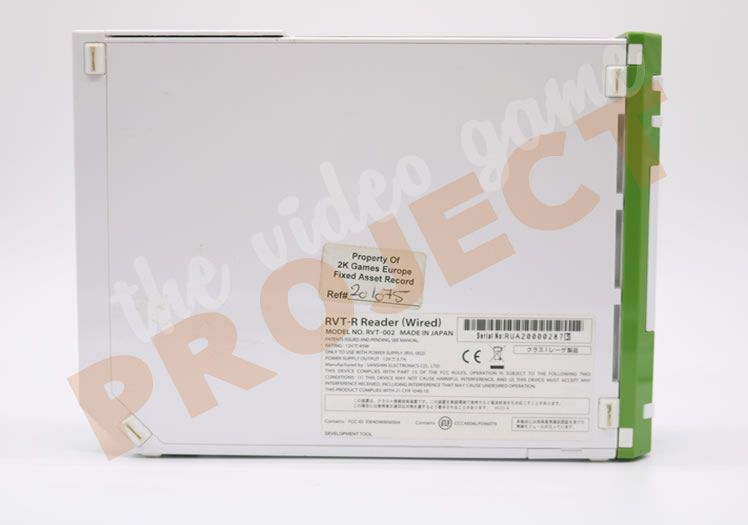
Side 02
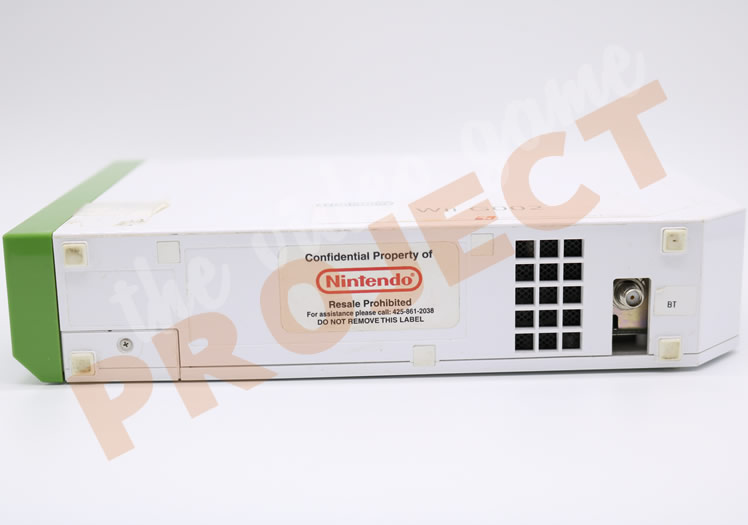
Bottom
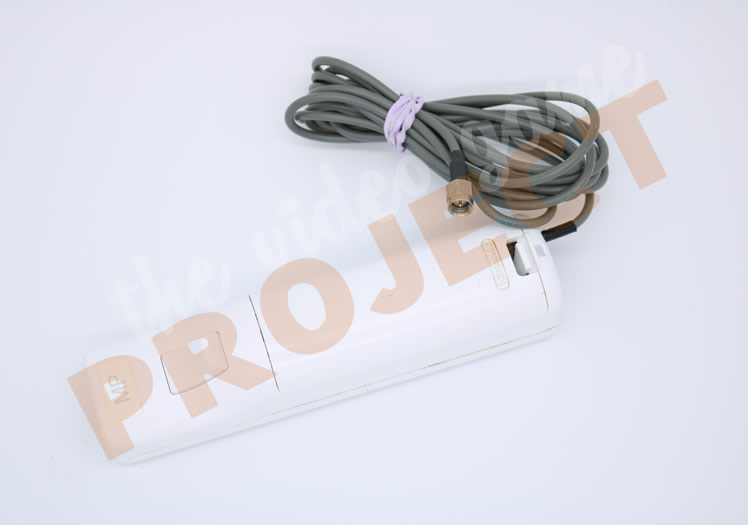
Wiimote Bottom
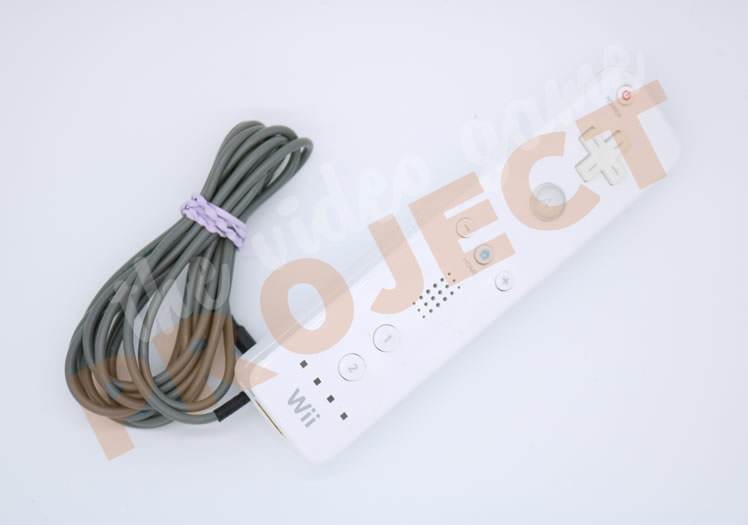
Wiimote Top
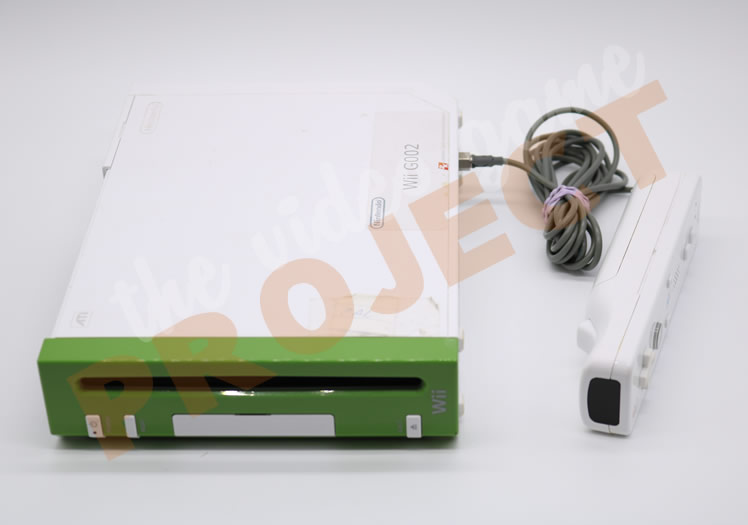
Console / Wiimote
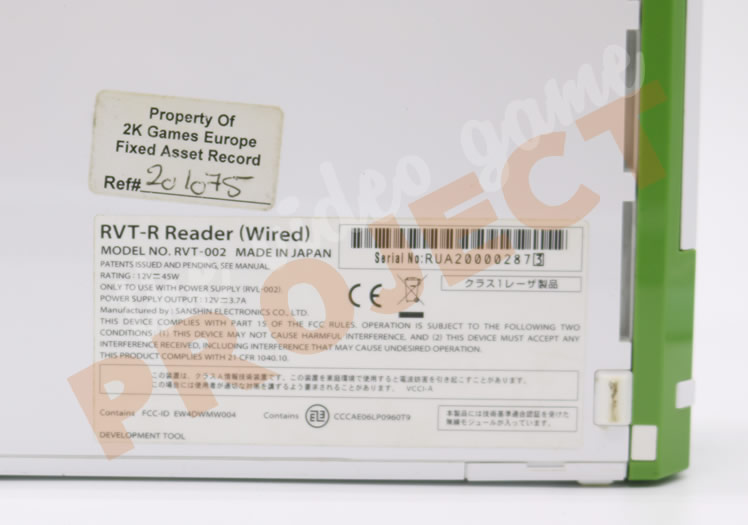
Label Close Up
Wireless
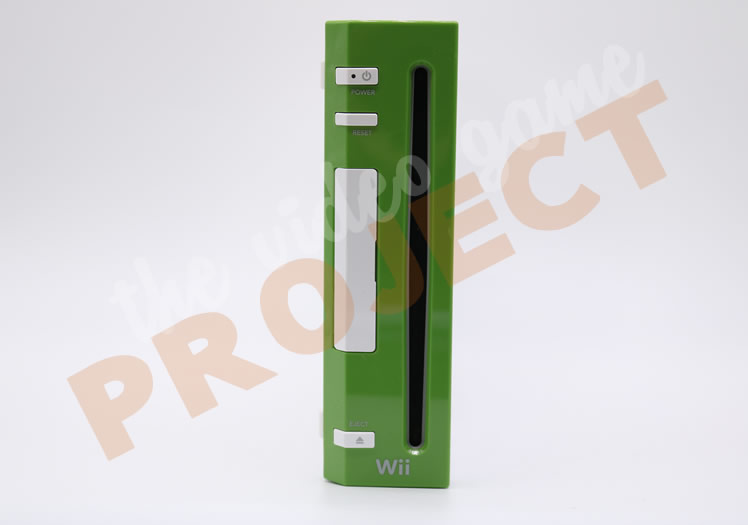
Front
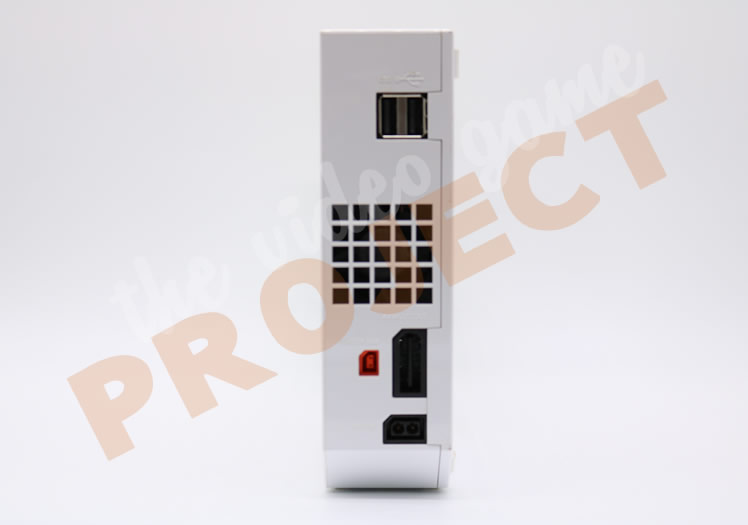
Back
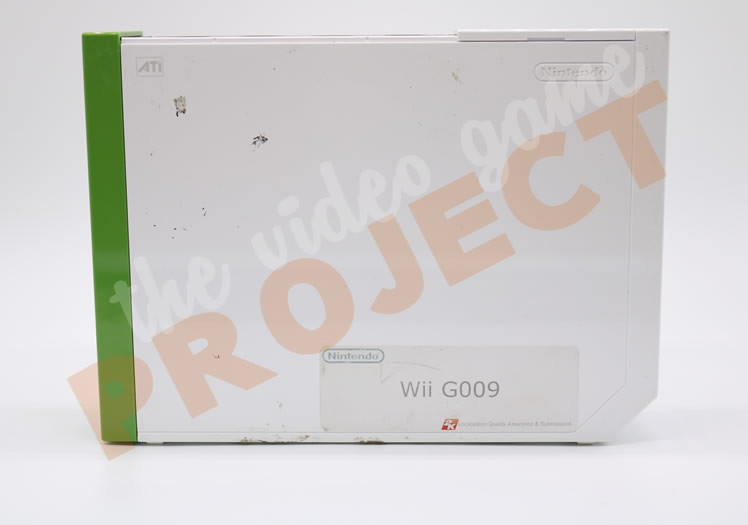
Side 01
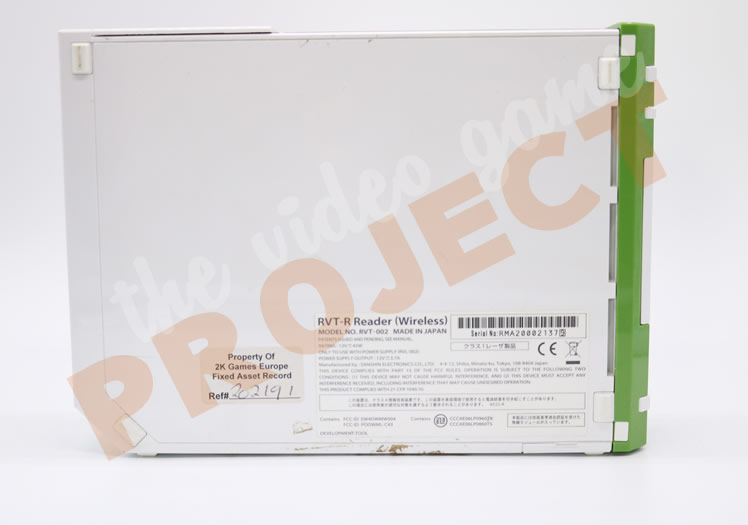
Side 02
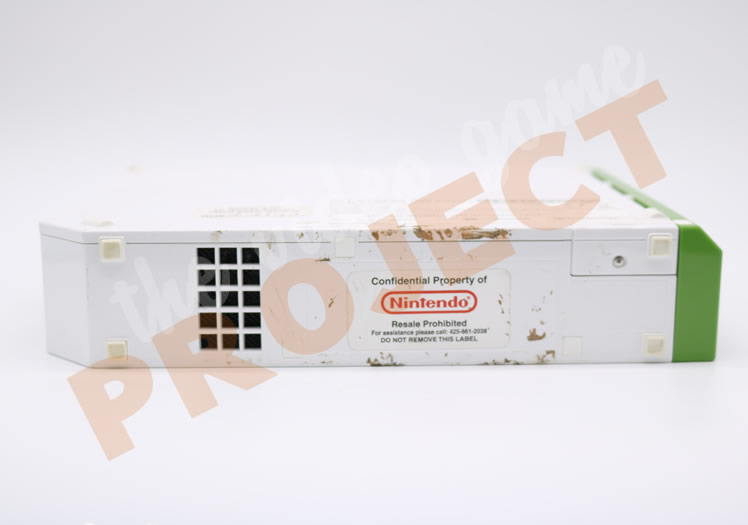
Bottom
